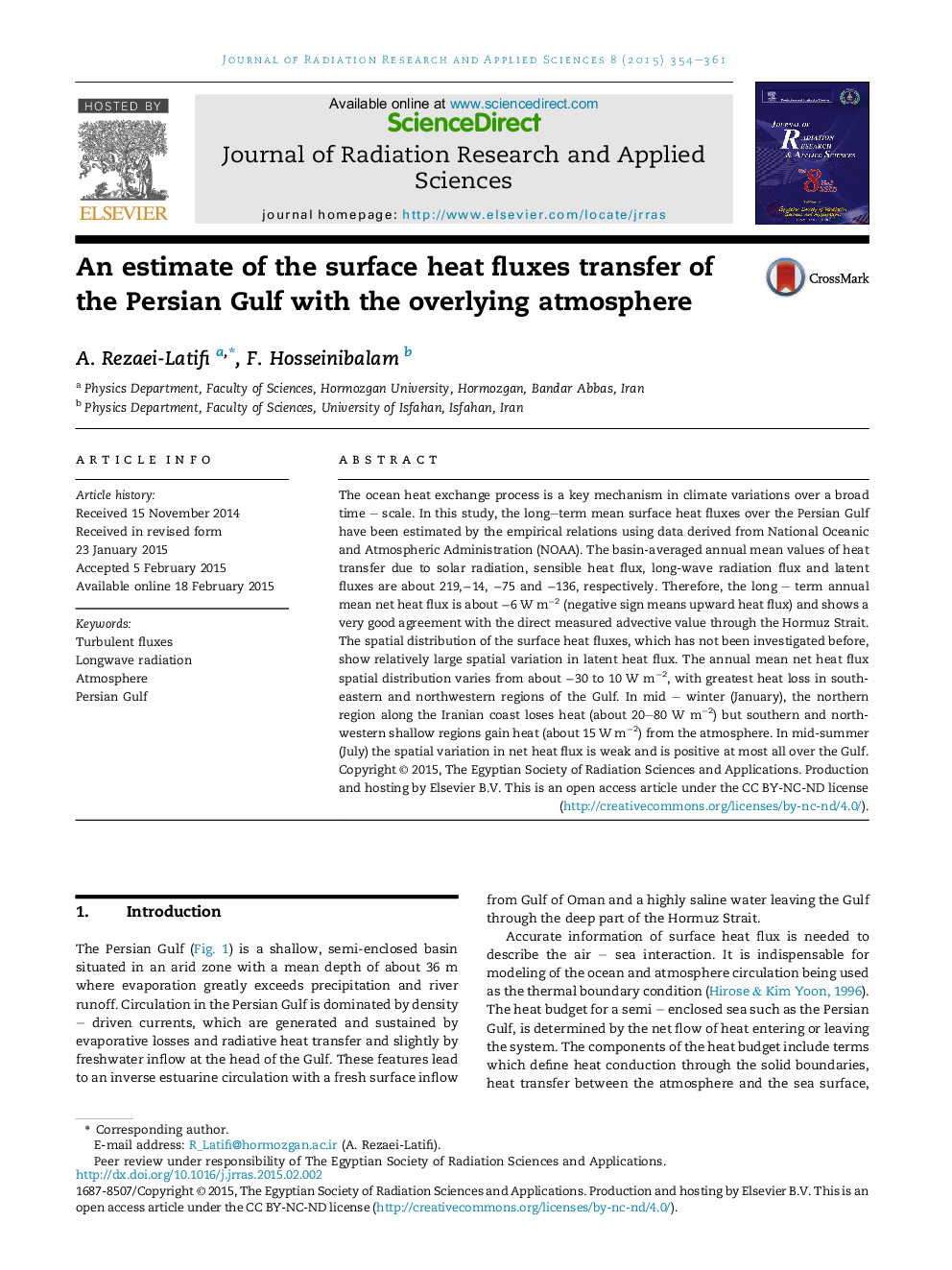| Article ID | Journal | Published Year | Pages | File Type |
|---|---|---|---|---|
| 1570460 | Journal of Radiation Research and Applied Sciences | 2015 | 8 Pages |
Abstract
The ocean heat exchange process is a key mechanism in climate variations over a broad time - scale. In this study, the long-term mean surface heat fluxes over the Persian Gulf have been estimated by the empirical relations using data derived from National Oceanic and Atmospheric Administration (NOAA). The basin-averaged annual mean values of heat transfer due to solar radiation, sensible heat flux, long-wave radiation flux and latent fluxes are about 219,â14, â75 and â136, respectively. Therefore, the long - term annual mean net heat flux is about â6 W mâ2 (negative sign means upward heat flux) and shows a very good agreement with the direct measured advective value through the Hormuz Strait. The spatial distribution of the surface heat fluxes, which has not been investigated before, show relatively large spatial variation in latent heat flux. The annual mean net heat flux spatial distribution varies from about â30 to 10 W mâ2, with greatest heat loss in southeastern and northwestern regions of the Gulf. In mid - winter (January), the northern region along the Iranian coast loses heat (about 20-80 W mâ2) but southern and northwestern shallow regions gain heat (about 15 W mâ2) from the atmosphere. In mid-summer (July) the spatial variation in net heat flux is weak and is positive at most all over the Gulf.
Related Topics
Physical Sciences and Engineering
Materials Science
Materials Science (General)
Authors
A. Rezaei-Latifi, F. Hosseinibalam,
